| Lista Light |  |
July to September 2010
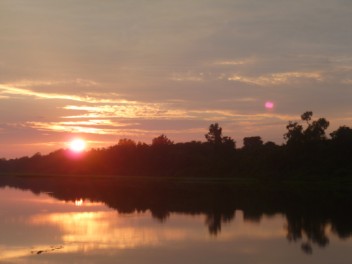
An eerie supernatural moaning started, slowly seeping through the trees, flooding into the river and enveloping the canoe. It pulsed and swelled, filling the caño like a fearful beast, but before we could bare it anymore it stopped, with three resounding barks. Floating down stream through a thickening dusk, Lista’s incongruous shape grew out of the gloom and we slipped aboard.
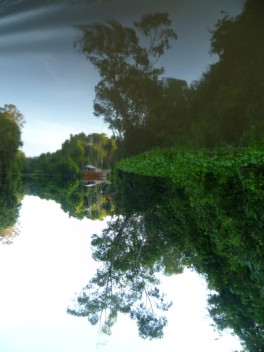
For two weeks we hadn’t seen a single person. I think it was the longest period in both of our lives and it was wonderful. We were cocooned within the trees, in the daily ebb and flow of the muddy waters that filled and discharged from the caño upon which Lista pirouetted, neatly executing 180 degrees on her anchor, with centimetres between her stout behind and the thick wall of forest.
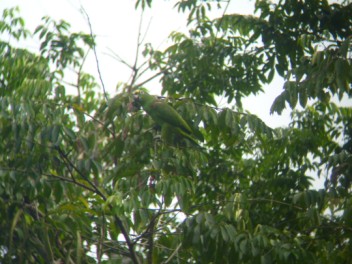
We had decided to escape from the thick soup of plastic bottles, carrier bags and polystyrene that lapped in Chaguarmas’ Bay, Trinidad. Away from the delinquent jet skiers, like ‘water boatmen’ who revved in concentric circles around it, but lacking purpose or beauty. Petrel is cheap, so there’s no incentive to stop this particular human weevil, even if a green turtle is just surfacing for air or a devil ray is slipping by. Natural beauty is rapidly ebbing away from this once forest enshrouded country and with it its soul.
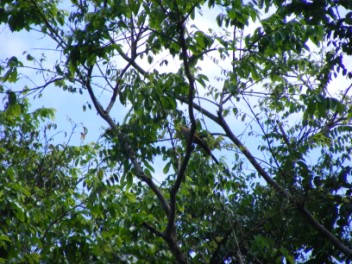
Actually, we had been planning an escape for months, almost two years ago we had aimed for South America, along the way we had found the most beguiling of seabirds and so had begun an odyssey in the Lesser Antilles, involving the need for each and every one of them to stand in line and be counted. We had swum through boiling seas, crashed against rocks, climbed crumbling ‘ghauts’ and severed Lista’s sacrificial keel as she grounded in churning surf in unchartered sea. But our commute to work had also involved swimming through azure waters as iridescent fish sparkled below, the staff had starred up at us with charcoal eyeliner and gleaming white tails and the neighbouring company’s workers had lolled in the trees, with serrated mains and long talons languidly watching the new oddball employees.
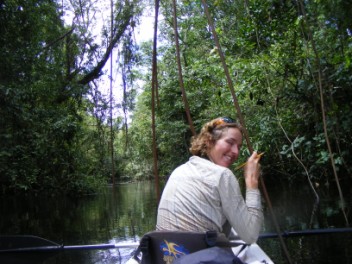
Finally we had reached South America and woven our way up the Orinoco Delta. For four weeks we basked in her beauty in a dual universe of seabirds and forest. The seabirds were below deck, fluttering through our laptops as we wrote the Seabird Atlas, the flooded forest at our sides as we paddled through its shadowy first and last light.
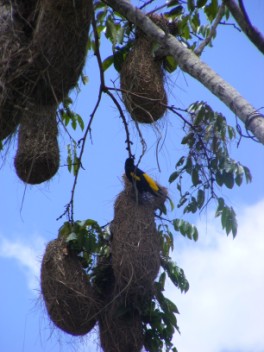
On the first day’s voyage upstream we could barely eat, neither of us wanting to go below, afraid to miss the scenes that were unravelling at ours side. A huge caramel river framed by a wall of green. Suddenly a shock of yellow and black and the hanging basket homes of the bubbling, yellow-rumped caciques would swathe a passing tree. Next our heads would be screwed to our backs as we craned into the sky at swallow-tailed kites riding the thermals. A snort by Lista’s bow and a pair of Amazon River dolphins, marshmallow and grey, pierced the water at our sides.
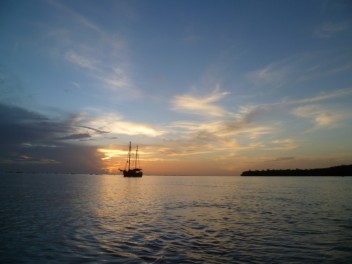
On the third day, we sneaked from the main river; from the Wareo people in dugout canoes sitting on back eddies; in motor boats ploughing to fishing grounds downstream; in their stilt houses swinging in hammocks, but mainly at our sides grinning as we performed our bartering charades pirouetting and gesturing wildly as we attempted to describe what was on offer on our floating market. We slipped into a side caño that grew narrower and narrower when finally the branches barely cleared Lista’s rigging and weighed anchor. We had considered a fruit tree, a palm tree and a standing dead tree as potential Inns in this invisible road map, but we couldn’t really tell if this was the spot.
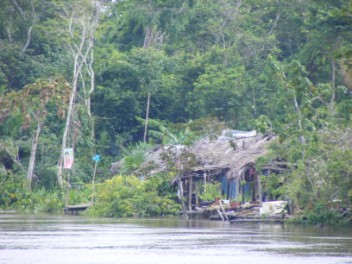
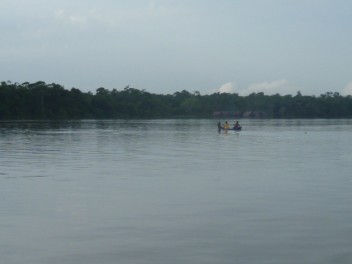
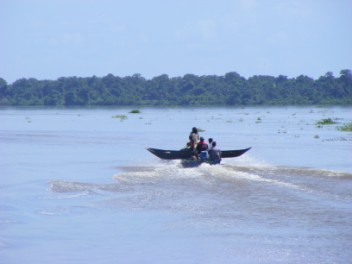
At first light we would set off down a new fork in the web of tributaries and every day we would find new species. It was startling in richness, starling in its lack of humanity. A despair in humanity had been growing for some time, in its disregard of wild things, its lust to tear down forests for ply board, to chop seabird chicks’ heads off, now that they were accessible at the flick of a switch on an outboard motor, to roast the last remaining turtle, to drag the last fish from the ocean depths, to pierce ever deeper for oil, relentless, without regard for the future, someone else to blame, the world will cope, it has in the past..........
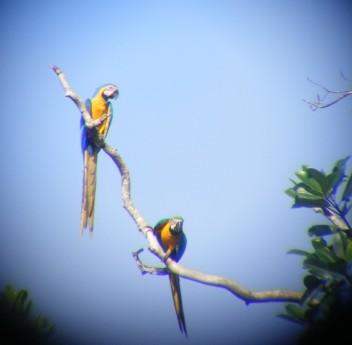
Here, there was peace. Gradually the forest grew accustomed to us and us to it. It may have been our imagination, but it seemed that day by day we softened into the backdrop, while the wild things stepped into the light. Blue-and-yellow macaws exquisite and inconceivable to our Devon-Northumberland roots screeched daily overhead, but one day a pair circled us- actually broke their roost-to-fruit-tree-and-back routine and flew to us, staring down at the deck from on high before flapping and squawking away. More and more residents appeared; a branch that bent into the water was the daily platform for the most elegant of sun bitterns. She stood and occasionally uttered a crystal purr. One day, she was joined by another two bitterns and together the trio danced. In and out of overhanging branches they pointed like ballerinas in their love dance. One would jostle forward, the other side step past, then retreat, before pirouetting forward once again.
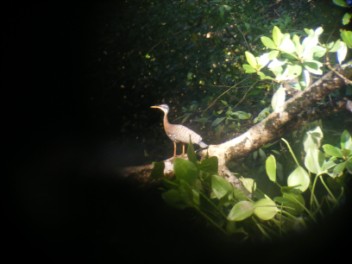
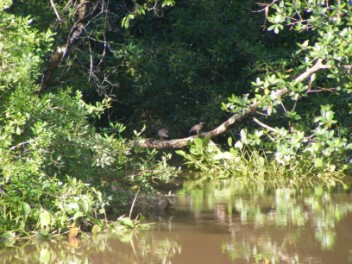
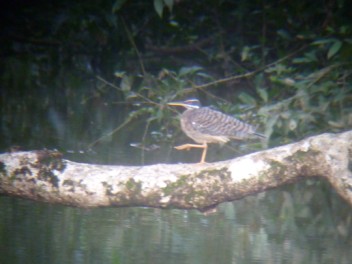
One morning the tree tops were full of green oropendolas, as the noisy seventy-strong gang hopped and glided from branch to branch peering for insects. Then aloft, the king of the troop began his dawn salute. The oddest coconut-wind chime cascade of notes were issued, ending in a polite bow, upon which the poor fellow appeared to fall off his perch, but head to toes, righted himself and began the farce again!

Nearly every morning and evening the white-chinned toucans would perch a loft and together croon their yelping call to one another. Head jerking backwards, clapper beaks opening and woofing like a pair of puppies; the squirrel cuckoo would go about her rounds, scolding at the lack of plump invertebrates; the monkeys would appear and shake branches at us and the green-and-ruffous kingfisher would exhale a piping call, dash past Lista’s beam and dive deep into the tangle of forest roots.
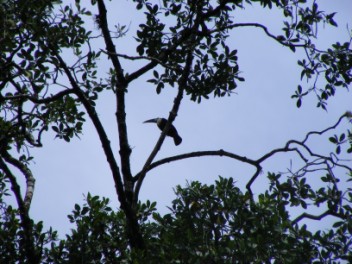
There were no hoatzins in our neighbourhood, so we would had to paddle upstream for a meeting at No. 3 overhang tree, the doorstep of which had been stripped of leaves. They really are the most extraordinary of creatures with their ruminating, leaf eating ways and startled crown of feathers. Their grating calls could be heard long before they themselves were seen communally fanning wings after a downpour or on one furtive instance, humping! They are known as the ‘stinking bird’ and this fact alone has saved them from the shot gun, as their fettered flesh is of no value. For the Piping Guam which rummaged in the tree tops and the pair of black Curassows that hurriedly retreated, the same cannot be said, their flesh is valued and consequently our sightings were few.
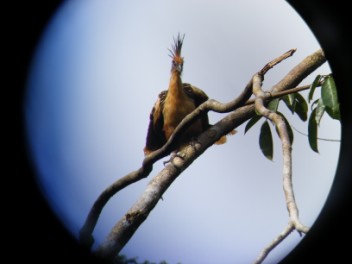
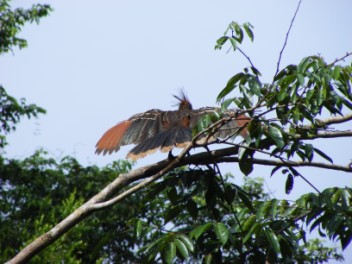
Back at the boat the guard dogs were growing in number. Seated for lunch, a dragonfly would suddenly dart past one’s ear and cease the goliath proportioned horse fly that was just about to nuzzle in close for its lunch. They did appear to favour Dave, perching on his knee, paddle or fork with whatever brazen manoeuvre it took to be close it seemed. Perhaps it was Dave’s beard that had sprouted and bloomed, a habitat in its self that attracted his Dragonfly adorers? Nevertheless, a maximum of ten were counted ‘on guard’. Unfortunately, Dave’s admirers did not seem as interested in the ‘feet flies’, the infuriating critters that would sneak up on our ankles and bite long and hard, apparently immune to flailing our hands.
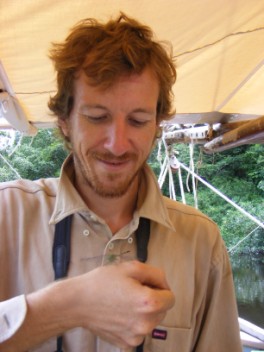
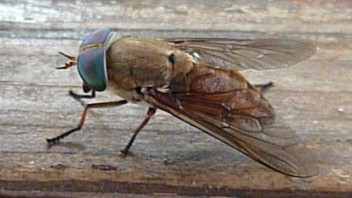
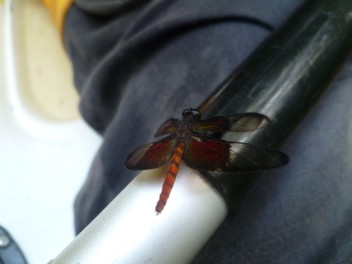
Every now and then we would see a line of wake making its way across the river that would catch our attention and an aquatic inmate would reveal itself. One day it was a snake, head held high pelting to the bank; once a caiman wooded scull just piercing the water. Then finally one day, it was an otter!! A giant otter diving for fish, a spectacle I had dreamed of, but the best was to come. It was Sunday, we had taken the morning off, exploring well upstream finding black-collared hawks, savanna hawks, yellow-crowned parrots and red-bellied macaws. We were sleepy in the hot sun and barely looking at the banks as we slid home. Suddenly we saw a kafuffle in the left bank, followed by a snort. We stopped paddling, the branches parted and three, whiskered heads emerged. Three giant river otters, caught out by this odd white log upon which two over-sized monkey sat. I’m not sure which party was more intrigued, for the curious band reared right up and edged closer to investigate! We were flabbergasted, hissing exclamations under our breath. Then suddenly the leader snorted and dived, followed swiftly by the other two and they were gone, a trail of bubbles marking their spot. We craned out necks behind, binoculars straining, when more than 50m away they emerged and slipped into the forest.
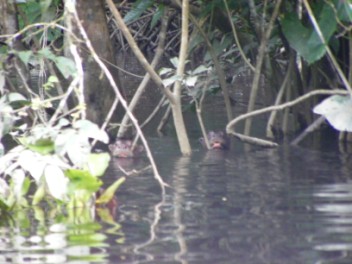
We were surrounded by water on all sides, yet by the sixth day we had still not dabbled a toe into it. Plucking up all courage, Dave bashed the water with a paddle, just to let the inhabitants below know we were coming in and after an amount of standing and prevaricating, we finally both jumped in. Chocolate water rushed up our noses. Within seconds we were both clambering back on board. Refreshing is not something you could call that first dip. There were grounds for distrusting the hummus soup: sting rays, anacondas, electric eels and piranhas to name a few!
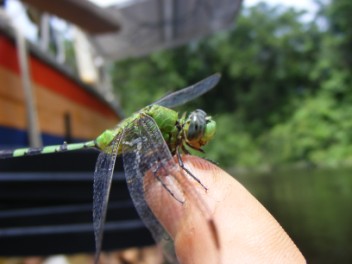
We became pretty sweaty working below decks, so whenever it rained we would pound up on deck, with soap and scrubbing brush and shower in the torrential rain. I imagined rows of eyes watching from the forest these pink bodies, but apart from the distant rumble of the steel barge heading up river or the odd whirr of an outboard motor, no one came. In addition to there being no people, there were also no lights, no over-head wires, no rubbish, no human signs, just a million stars at night and the screeching parrots by day.
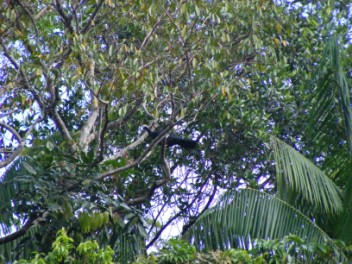
We moved to three anchorages during our sojourn, the middle anchorage was a very different tributary with very little remaining forest, mainly scrub, low trees and palm trees stretching into the horizon. With it came a very different group of inhabitants, the most regal of which was the bat hawk who chose Lista’s mast as his preferred look out. Unfortunately, this strapping young sergeant had a penchant for our dragonflies and swiftly reduced them to wings drifting on the breeze or hanging in webs on the rigging.
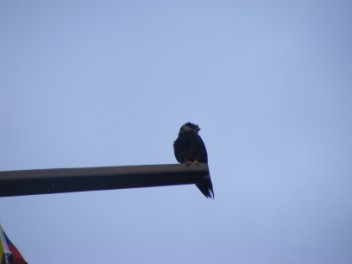
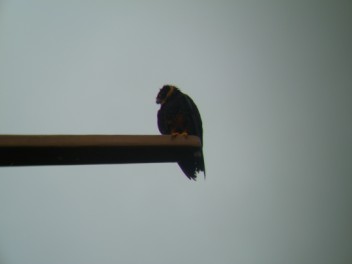
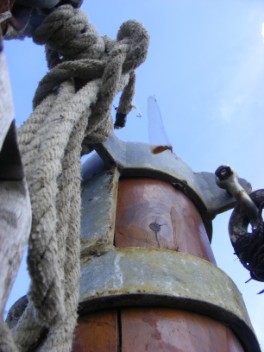
The chorus changed from the whoops of the hornbills and the wind chimes of the oropendolas to the sonorous donkey blasting of the horned screamers. These improbable ‘turkeys’ perched high on trees, eeeyawed across the swamps, when really it appeared that no tree should support their weight and that no bird should make that call.
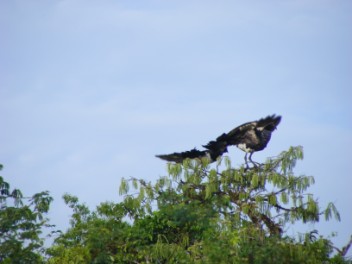
Sounds and scents had become an important part of our world as we ingratiated ourselves with the locals. Calls would often allow us to pinpoint the chorister and soon we grew to know who was who just by the chat. The smells were less revealing, beyond our unpractised senses. They ranged from hay, to cloves, to ‘horse’ urine, both beguiling and causing us to recoil equally, but the perpetrators or their purpose often foiled us.
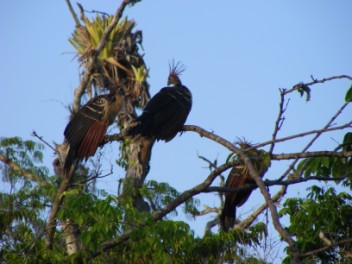
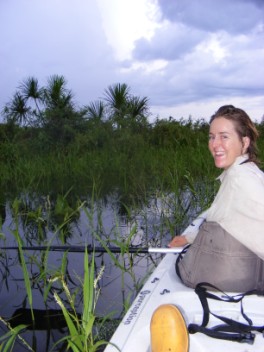
Our third and last anchorage was similar to the first with its high forested banks. Here, we were anchored by our own hoatzin corner and a slender-billed kite who had bagged the highest and best perch atop a dead tree from which he issued a sickly wheeze across the tree tops. Black-necked araçaries, miniature versions of the toucans, sent a cascade of twigs and leaves down to the river as they gauged themselves in their favourite fruiting trees.
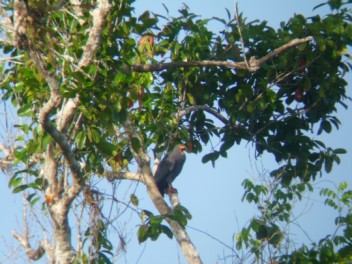
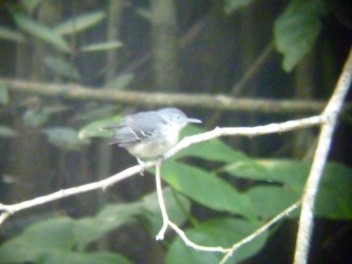
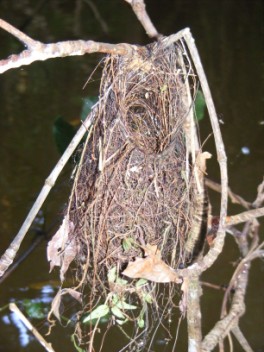
Our paddles often took us into the flooded forest, over logs and through thickets, allowing us silent access into this green, wild world. Nests often hanged from branches midstream to dissuade predators. We would carefully peak inside to see if they were inhabited. One evening we watched a tiny black-chinned antbird bobbing and scurrying in the low undergrowth on her hunt for invertebrates. As we moved away we noticed the reason for her frantic activity, a bedraggled nest hanged from a plant emerging high from the water. As our noses peered in we found four tiny chalk-blue eggs! But nothing could prepare us for the next sight. We rounded a corner and noticed a hummingbird buzzing from leaf to leaf in pursuit of insects. This is an often unknown part of a hummingbird’s diet; as well as nectar they need protein, most importantly when feeding chicks. We sat watching from the canoe and saw her dart under a huge ‘elephant ear’ leaf and then we noticed her nest. The tiniest cup of moss and lichen sewn neatly with spider web! Suddenly she flew from the cup and quickly we paddled across and looked in. One tiny white pearl and a speck of rufous fluff apparently recently emerged from the ‘ticktack’ egg that lay at its side. We returned five days later to find two tiny chestnut chicks.
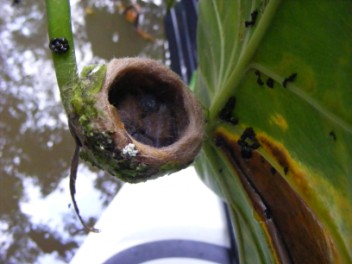
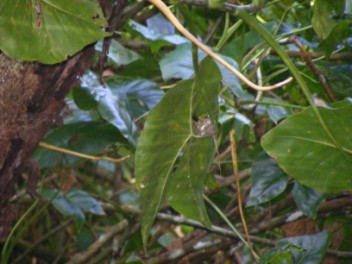
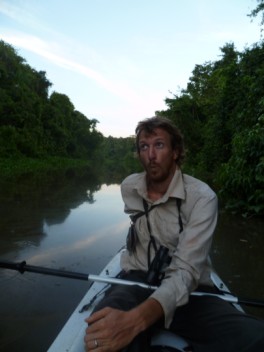
As the last day grew closer, we regrettably planned our departure. There was, however, one slight hitch. On the third week into our sojourn, Dave had heard scratching in the folded main sail. Various possibilities from mice to massive insects flashed through our minds, but it was not until dusk that the latest arrivals made themselves known. At 5.45, something fluttered from the sail, followed by another and another. On guard, we counted out twenty bats! Thus, we were complete, with a force of dragonflies nailing the daytime bloodsucking intruders and the bat shift nailing the night time molesters! Now, however, we would have to let them go.
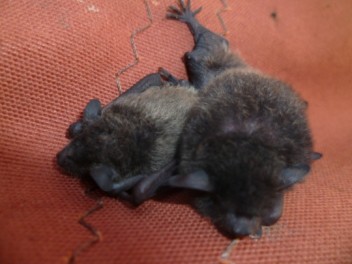
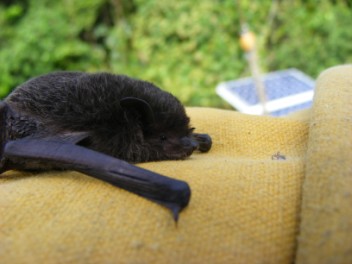
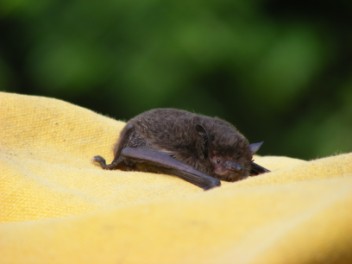
Bats are one of my favourite animals; queens of the night, they use their incredible system of echo location to navigate through a featureless world. They are pollinators, pescivores and insectivores; munching their way through tonnes of insects each night. We would rather have kept our new friends, but an ocean passage, new habitats, unknown predators, not to mention introducing new species to different countries was not acceptable. Finally, on the morning of departure, at 5am, we hoisted the sails to prevent the returning bats from sliding into their new floating home. It was heart breaking, swarms of bats, far more than we had counted, flew round and round Lista as we moved away. Five little pups clung to the sails, their mothers returning for them. As the sun grew, slowly the circling bats retreated and with them the Orinoco and all her hidden secrets. We were returning to civilization, but leaving the real world.
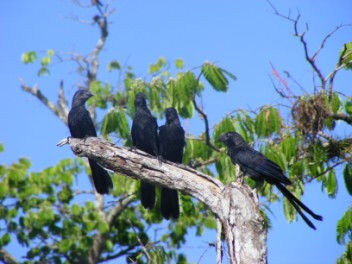
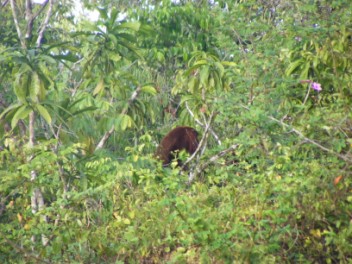
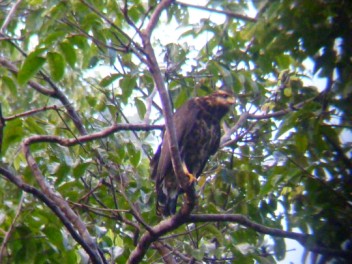
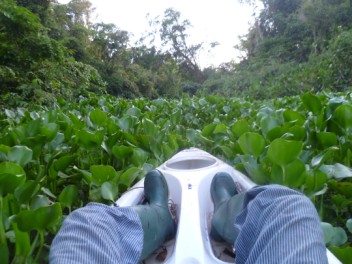
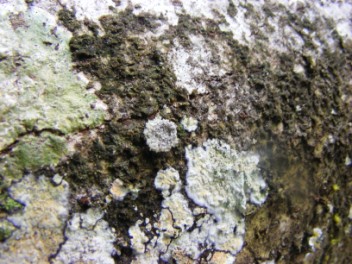
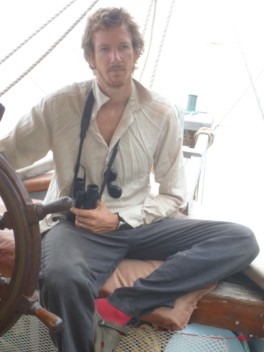
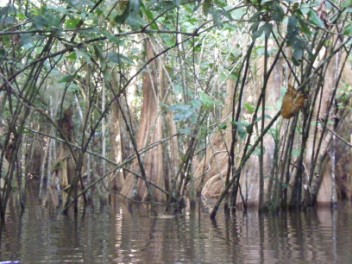
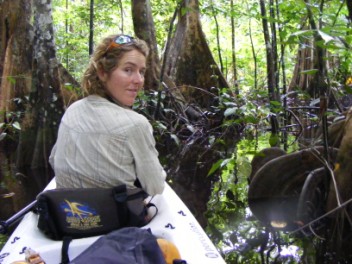
Back to previous section - April to June 2010
Forward to next section - September to November 2010
This page hit Count : 5305
This is the Lista Light Website, for the travels of the sailing boat Lista Light
Click here for text-version of site